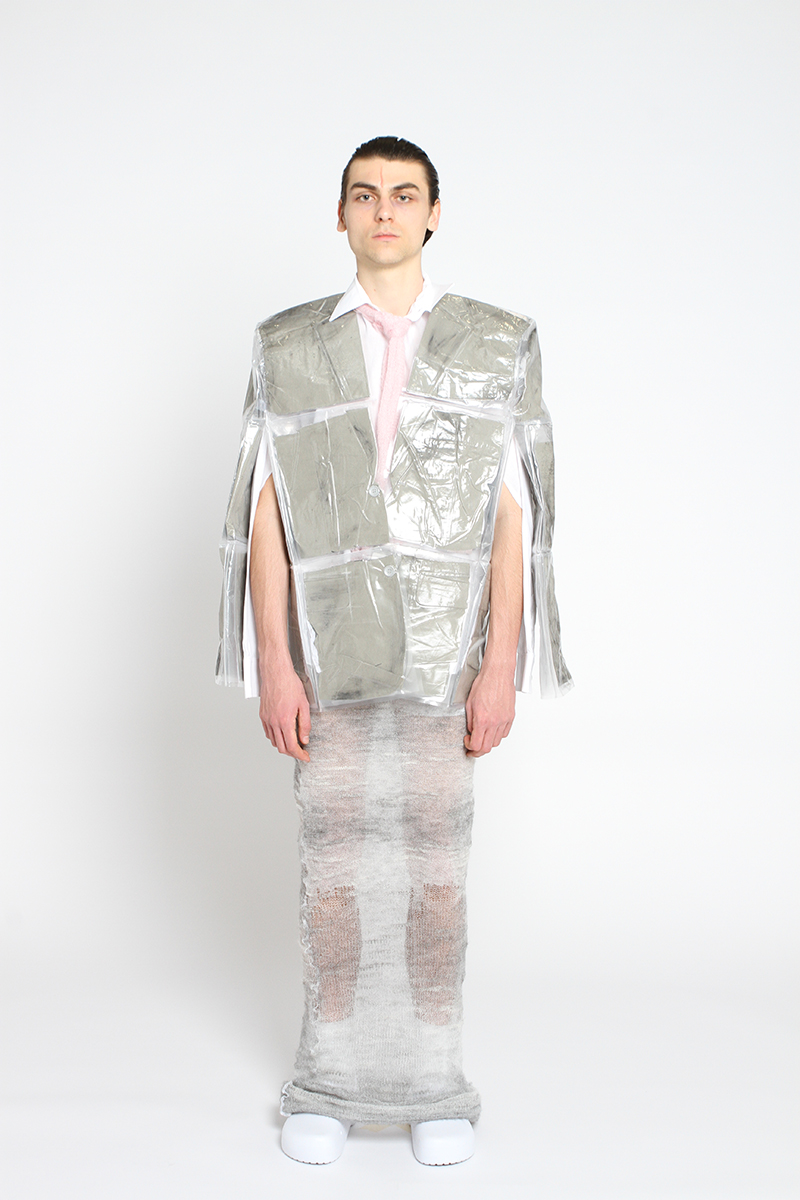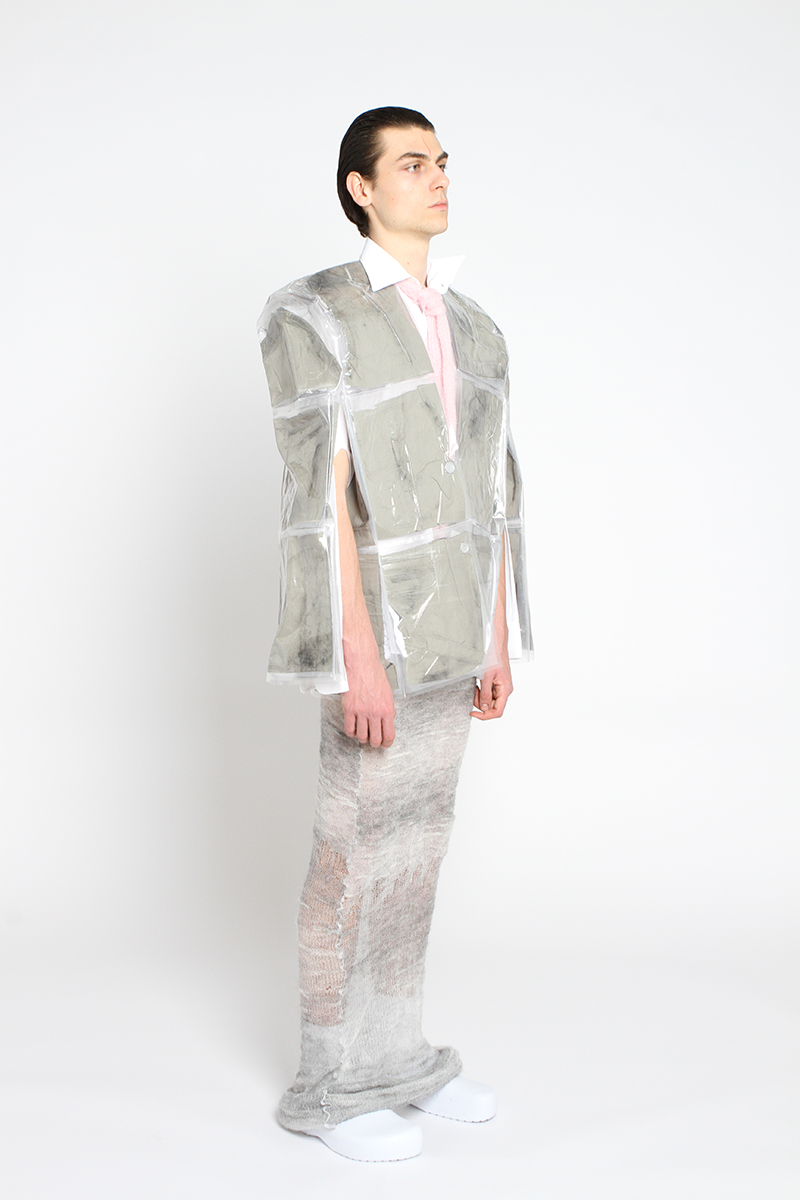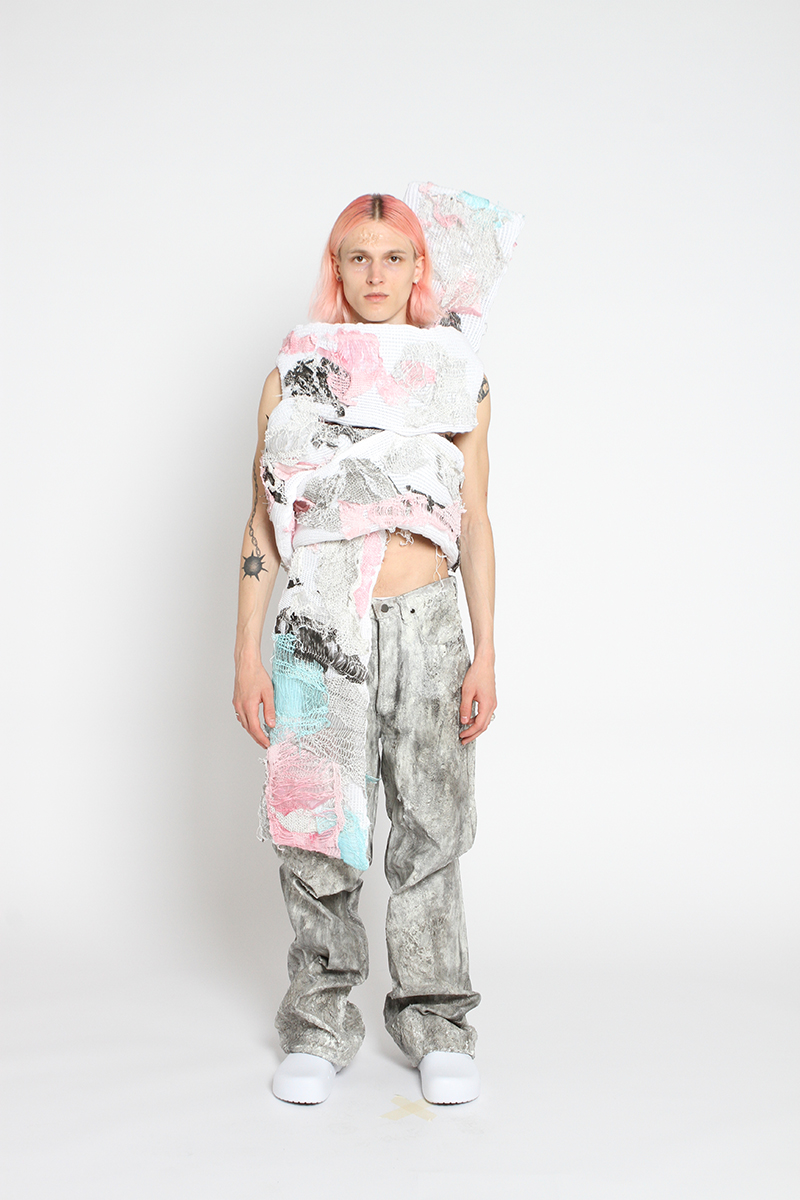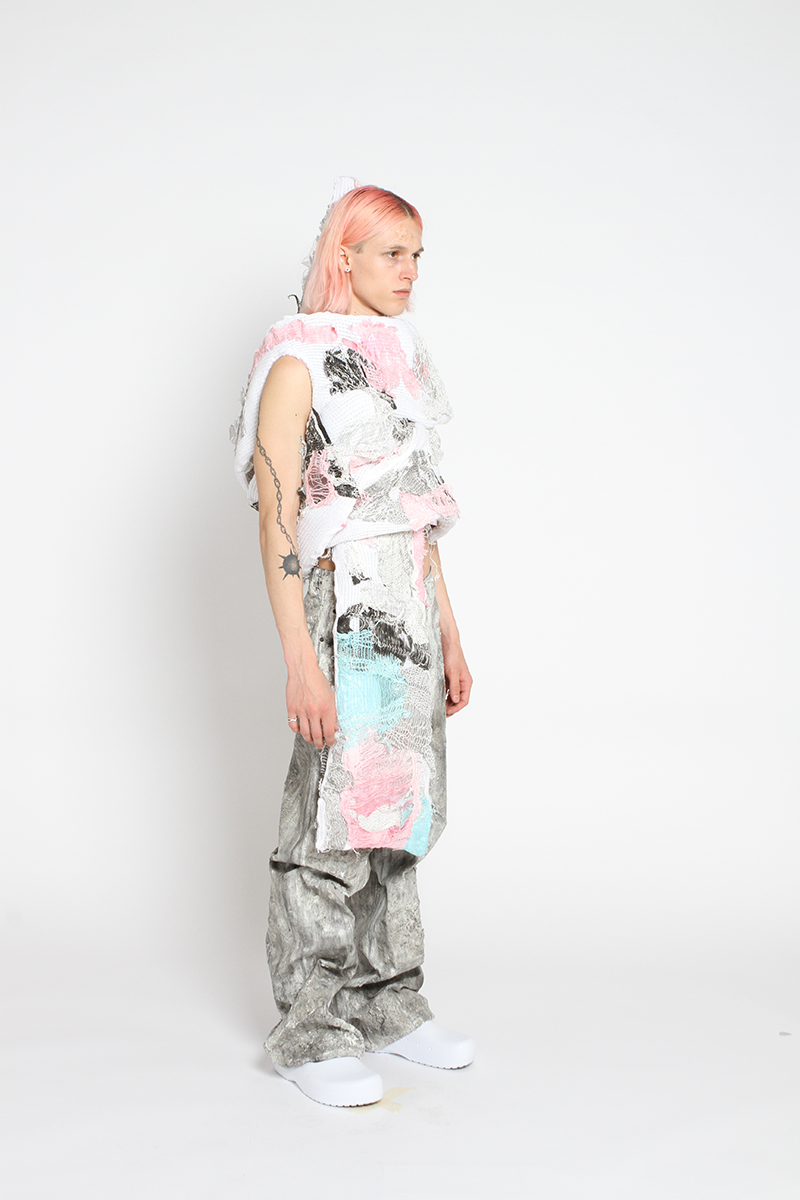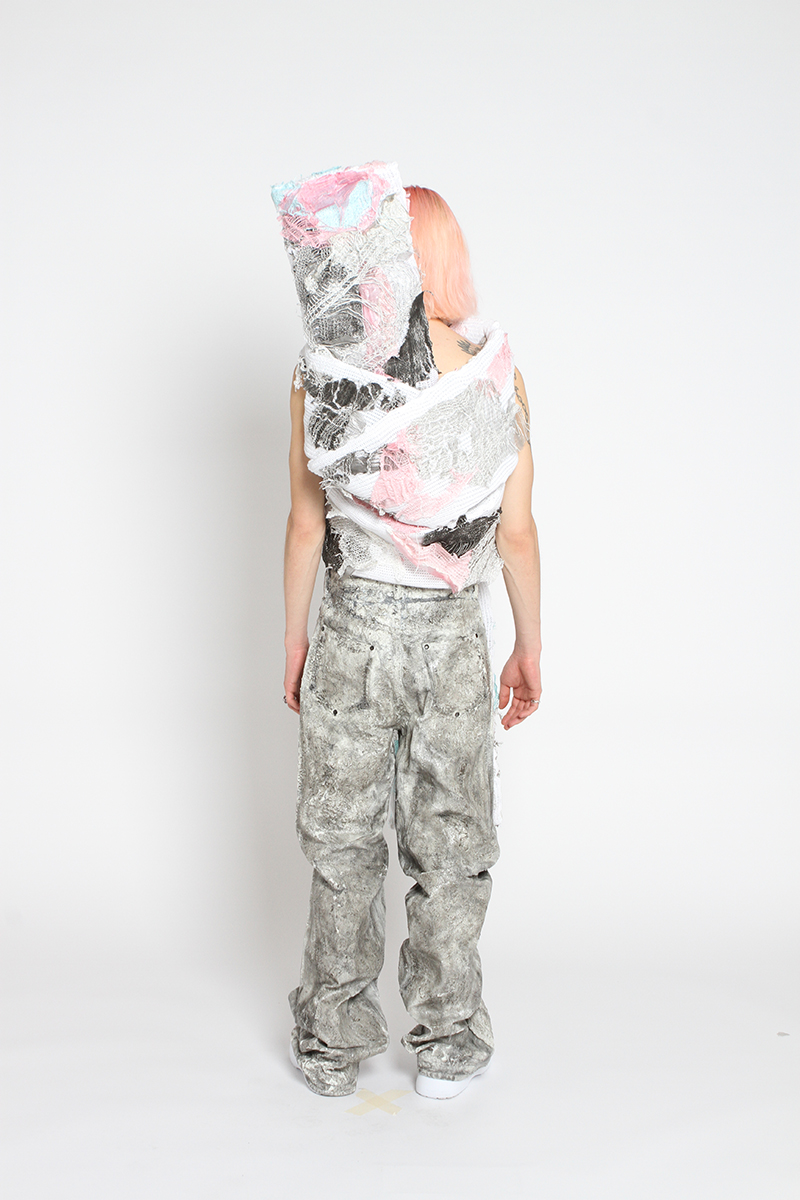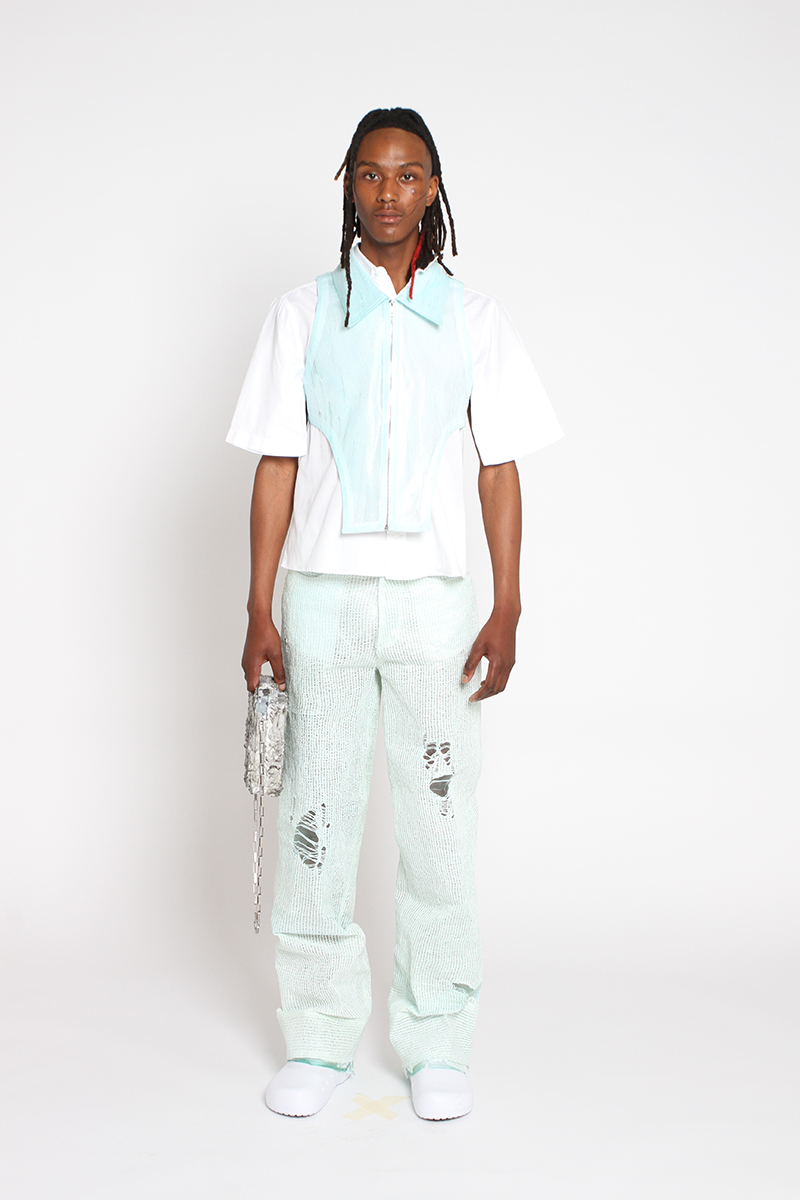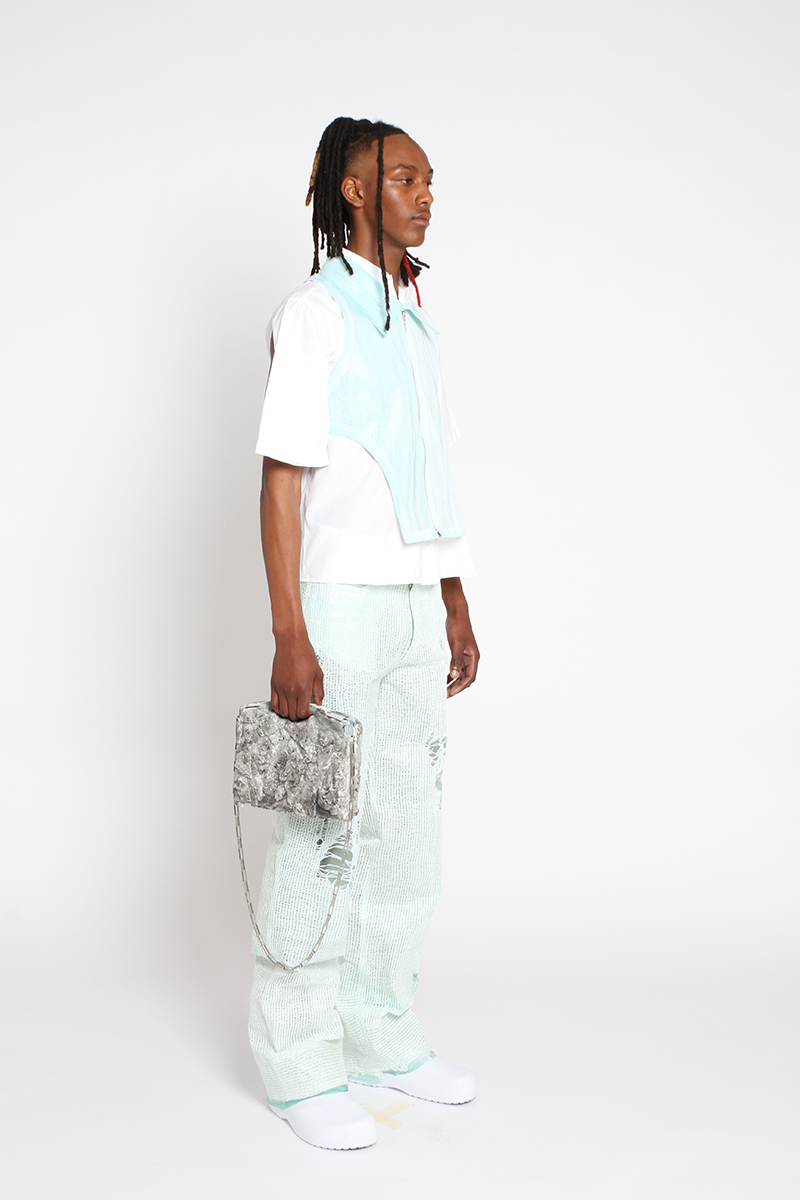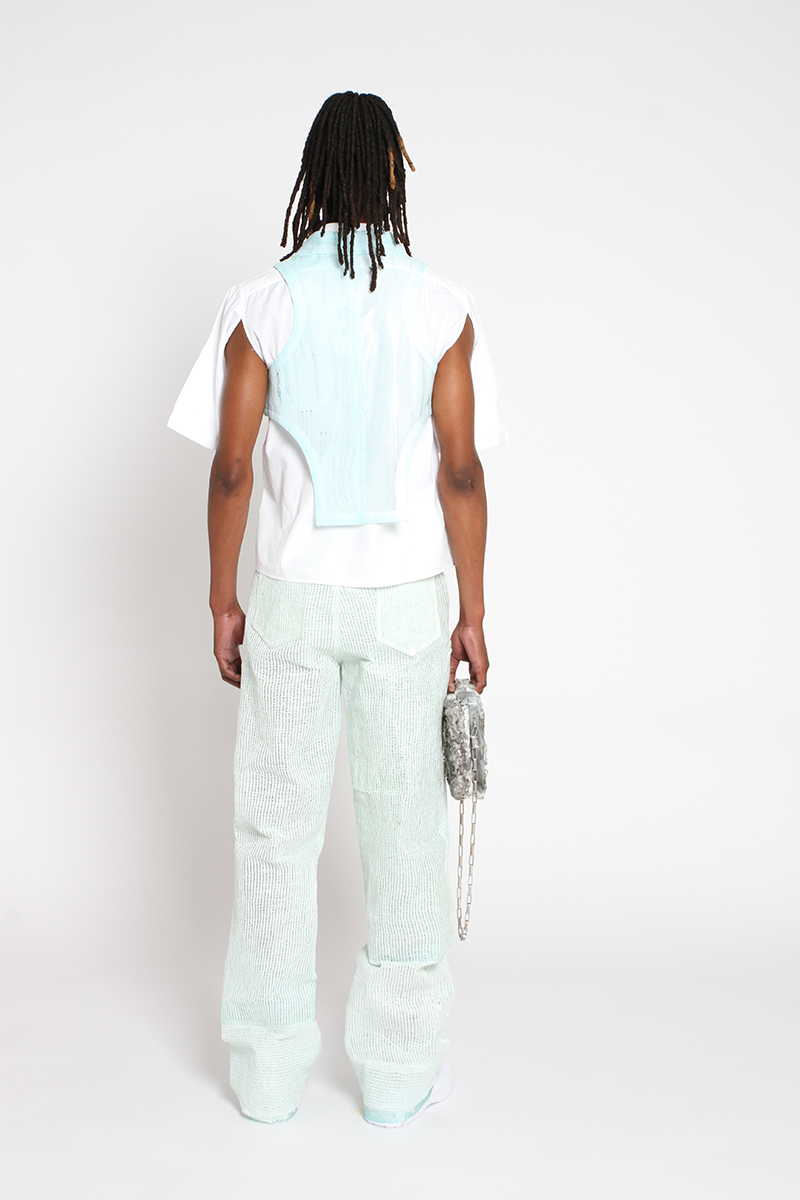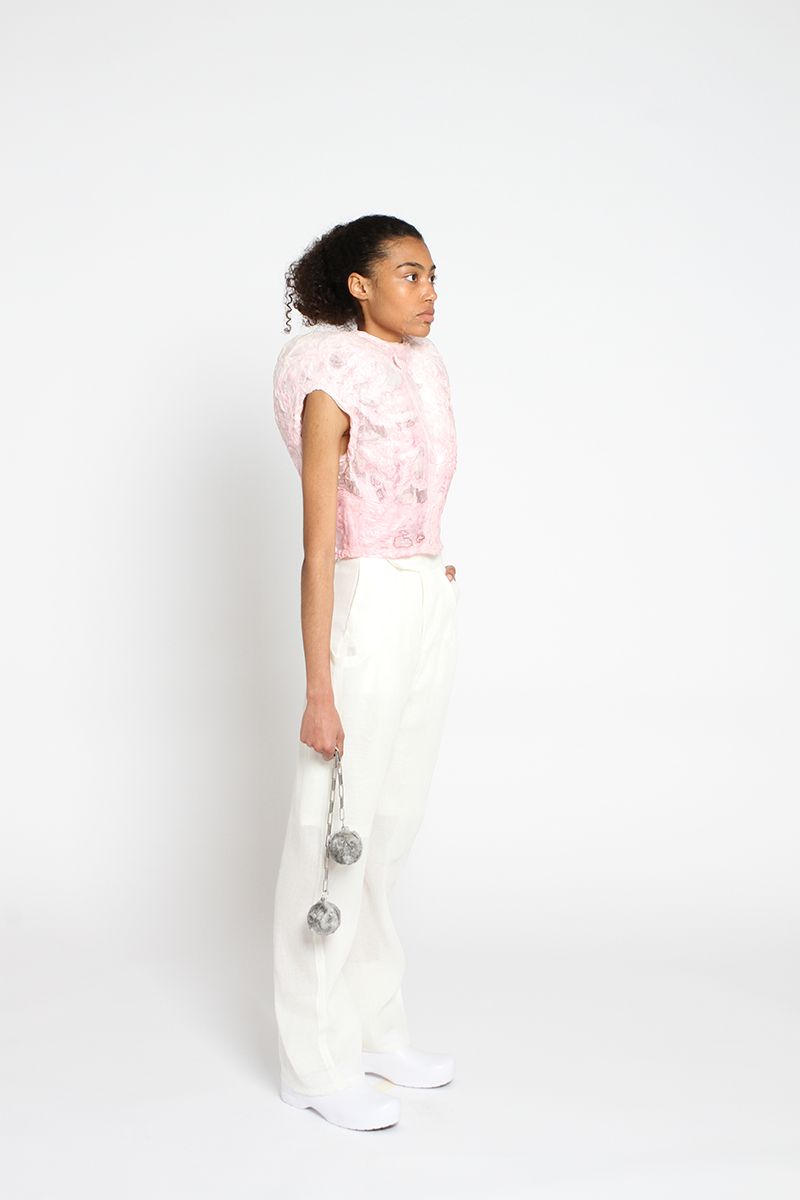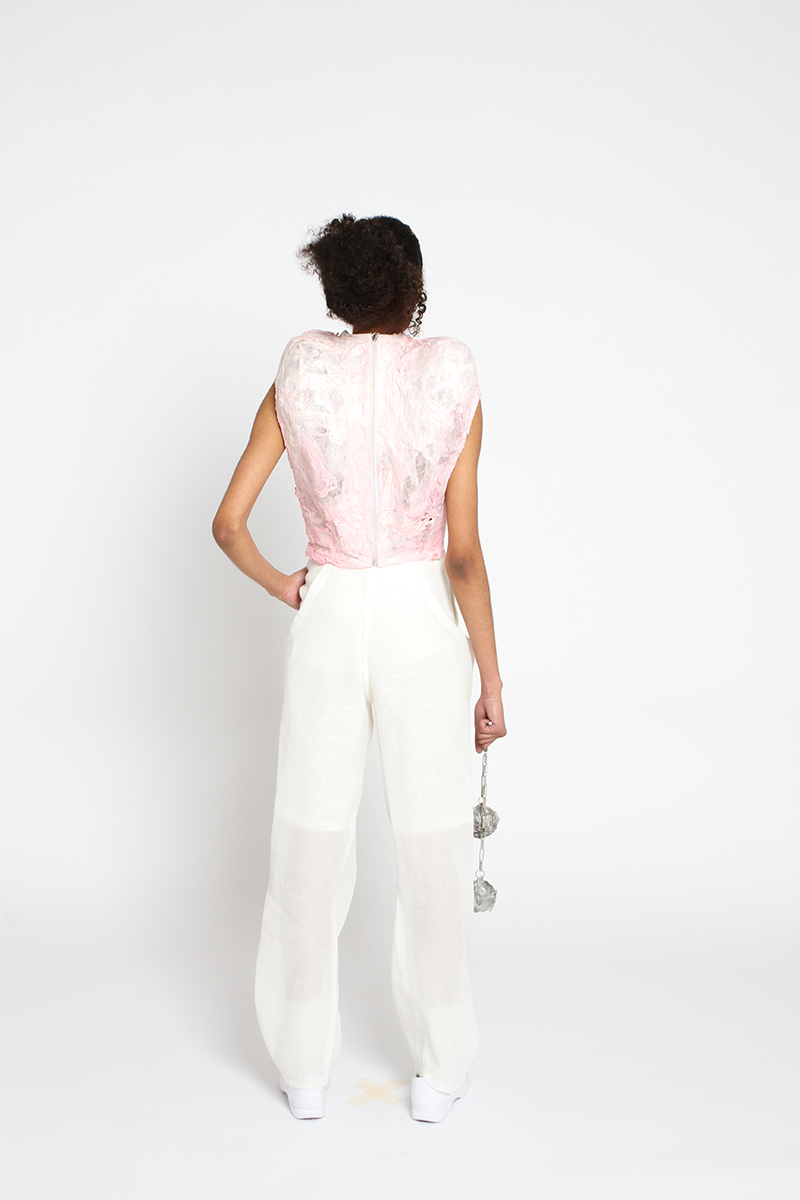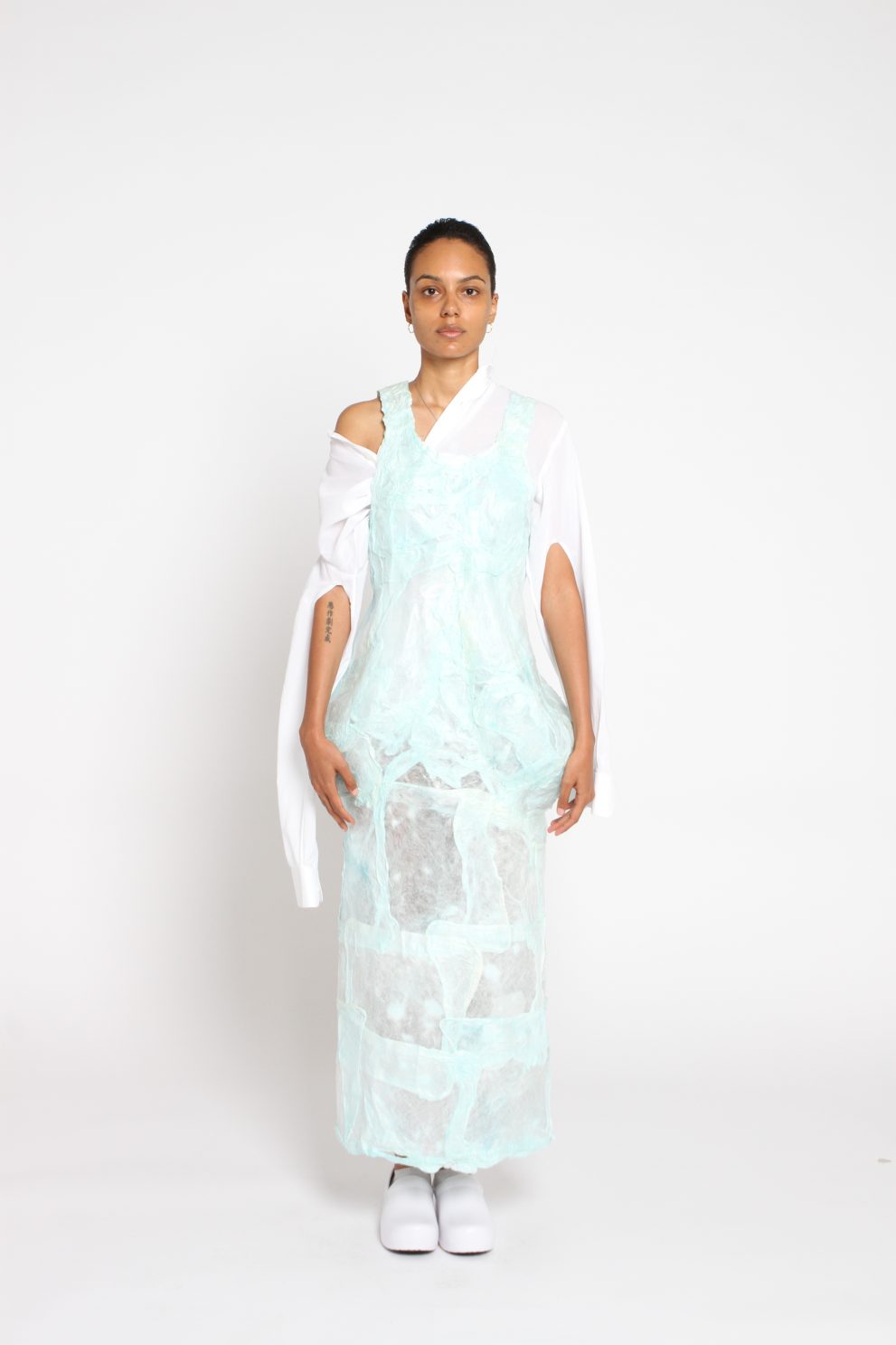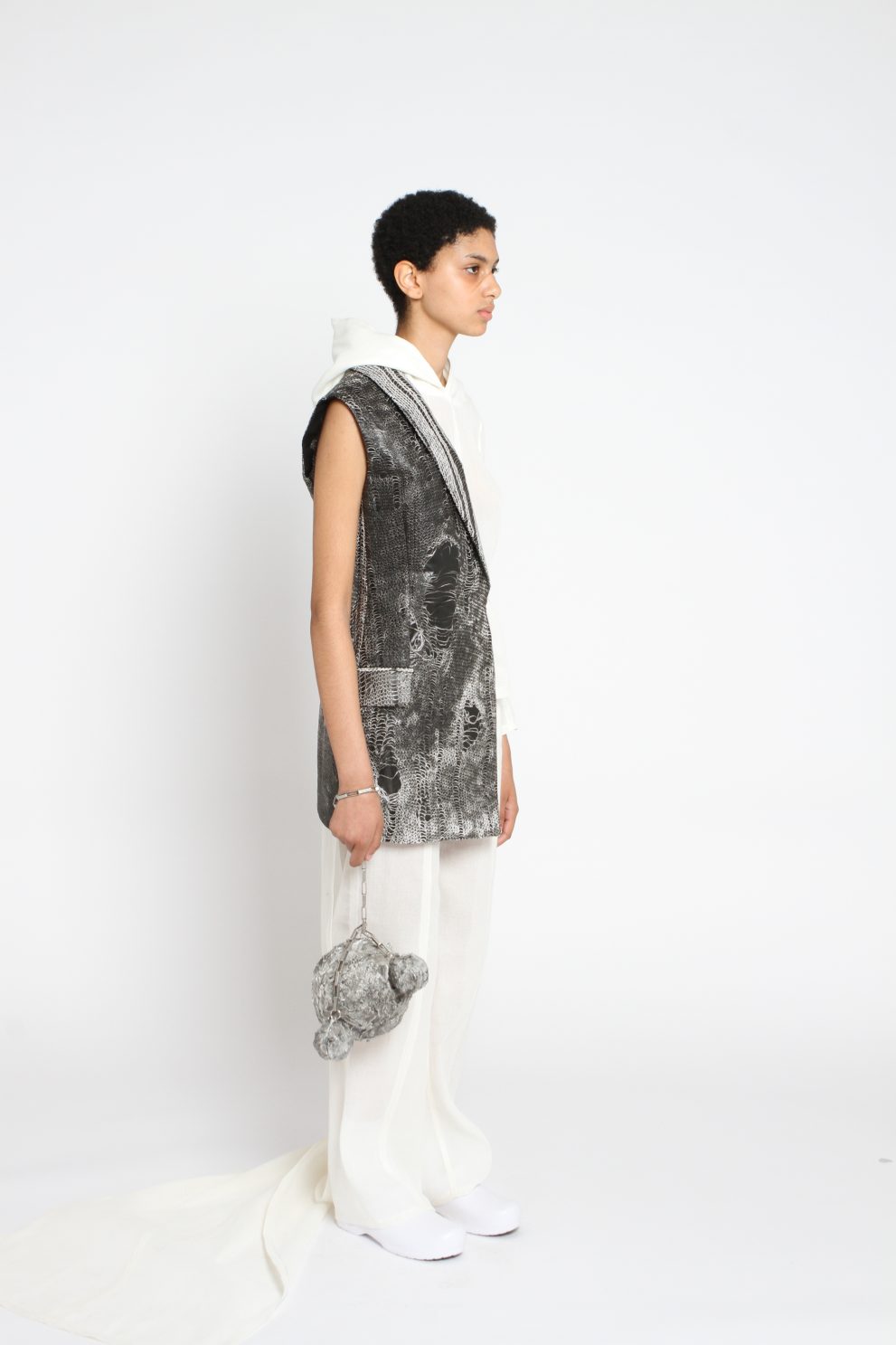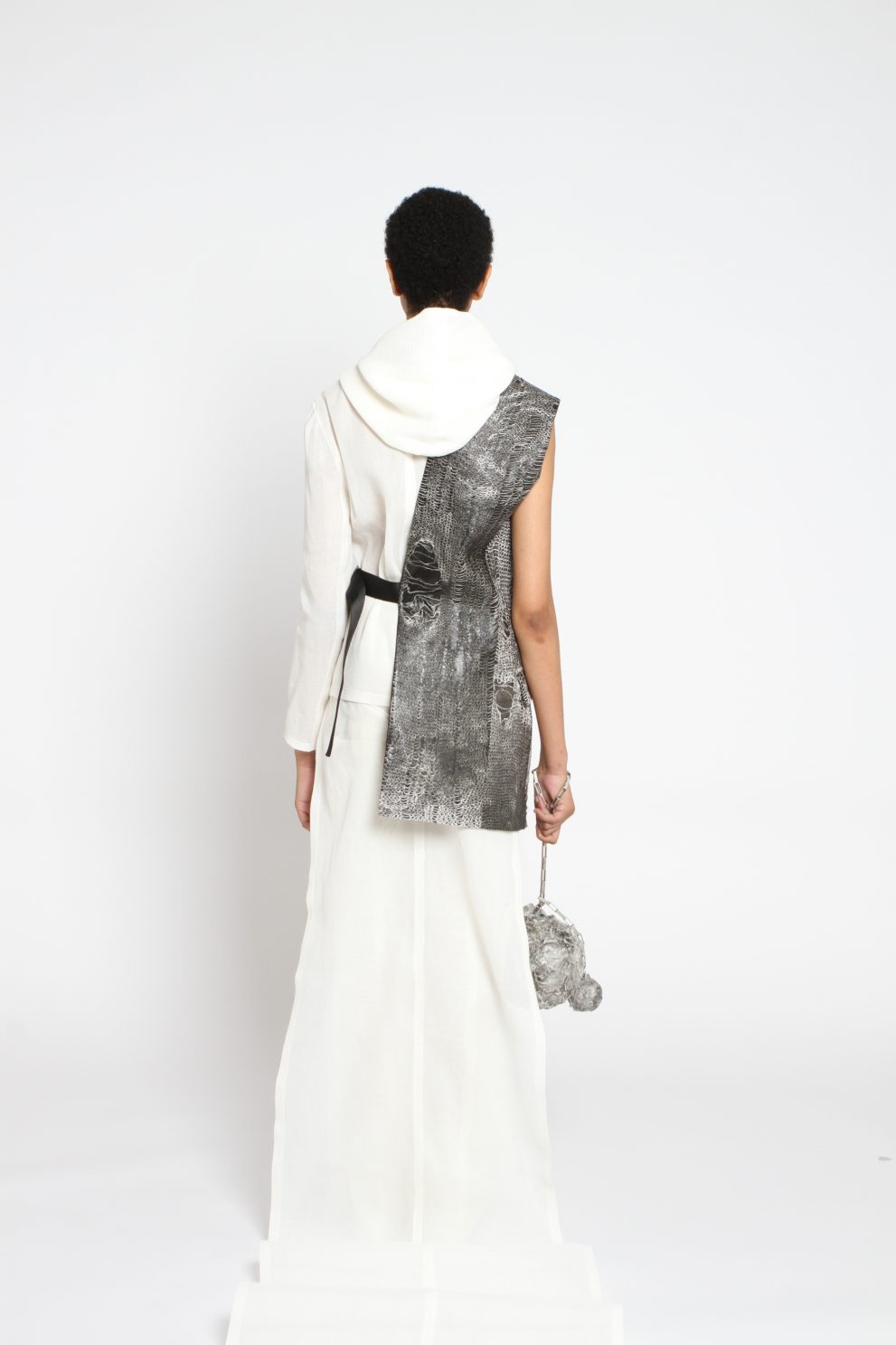Baie de L’Espalmador
The name of the BA collection “L’Espalamador”, comes from the name of a hidden bay which nurtured me as a child, a teenager, and an adult. The memories and aesthetic sourced from that place are present in the DNA of the collection. Most noticeable in the colour palette ranging from light pastel colours such as baby blue, baby pink, and off white inspired by facades and shutters which had been washed out by the sun/sea, all the way to neutral greys coming from worn down concrete/stones.
Driven by a melancholic approach, I conducted a visual study on the deterioration of materials like stone/cement caused by the passing of time in contrast with a study on how humans try to protect/preserve from time.
As found in my research, most protection techniques are transparent; which makes me recall to when I was a kid, my mother would often tell me “look but don’t touch”. Nature and time are far better designers then we will ever be, and we should embrace them deteriorating our builds. On the other hand, I find the way humans try to resist the laws of time quite poetic.
New materials have been developed based on that idea of contrast between pro- tection and deterioration, including the BioWeb (biodegradable), Mawata Silk (biodegradable), and a Coated Cement Technique.
Challenging an unknown material to be used like regular fabric has been the aim for the BioWeb fabric which can be spotted on a tank top, a sleeveless half tailored jacket, a trompe l’œil denim, and a tank top cut vest.
The cement fabric is showcased on all bags and on one denim while the Mawata silk patchwork is present on a sculptural dress and top. A segmented tailored jacket is vacuum sealed in food pockets and then reconstructed to be worn with a transparent knitted skirt shaped like a tube.
The silhouettes are “columned” shaped but are able to obtain their depths using a mix of transparency and opaqueness with stiffness and flowingness properties. The technical aim was to make sculptural pieces cohabit with tailoring and ready to wear codes. Most pieces are sleeveless to improve movement and nonchalance, only one sleeve is properly worn on a tailored hoodie, while others act as a “trompe l’œil” with displaced armholes.
Who knows if this collection will deteriorate through time or if it will be preserved using man made techniques. Or both?
